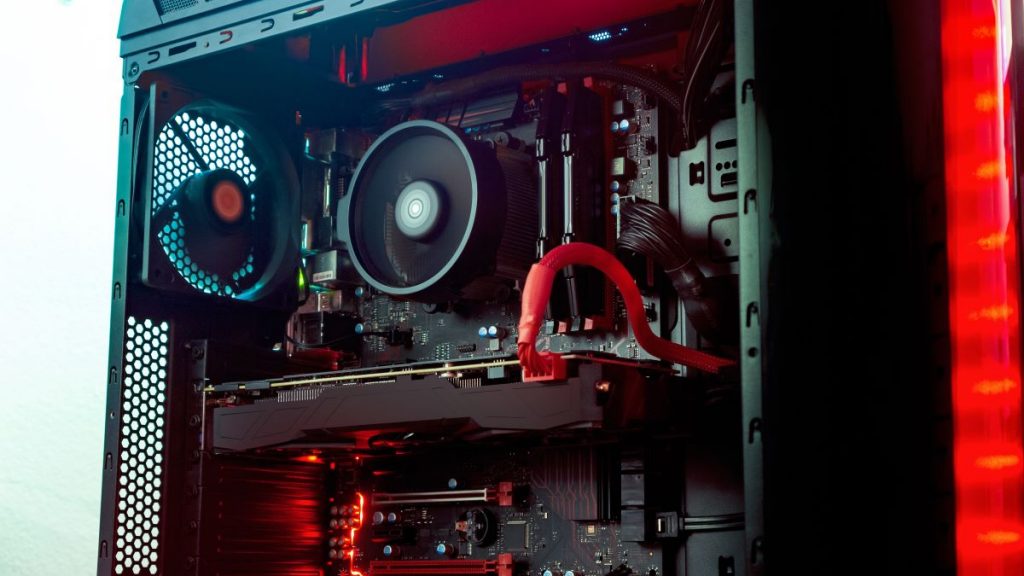The fast contemporary world asks us to adopt a lifestyle that looks forward. Out with the old, in with the new. That’s what they say. In no other field than technology is this mindset more apparent.
And technological change wastes no time. AI may sound new, but it’s rapidly advancing, now even covering data and storage. It can mimic human memory to minimize the storage burden. With AI-powered storage drives that maintain speed even as it fills up with gigabytes of data, there’ll be no space left in your drawers for old-school memory cards. As technology releases more products, the older ones are in danger of becoming obsolete.
In coffee shops, a bigger invasion is happening. Laptops are becoming the computer of choice for caffeine-pulsed workers. Where does this leave the good old desktop computer?
The Rise of Desktop Computers
The invention of the ENIAC during World War II is considered the start of the computer age. With decades of product development and engineering, we’ve transformed this huge electronic computer into smaller personal computers (PCs), such as desktop computers and laptops.
Desktop computers are called because they need a desk or table due to their size and power requirements. While they are getting smaller with each new generation of designs, they still need some space.
Before the desktop computers we know today, an even older prototype called “minicomputer” was used for corporate and commercial purposes. Developed in the mid-60s, minicomputers cost less than 25,000 USD (or 165,000 in 2019), had at least four thousand words of memory, and came in a wide range of sizes.
In the 70s, the first home computers were introduced to the market. The Altair, Apple II, TRS-80, and Commodore PET were among the first models that catered to the general public, not just the office workers. From being a necessary instrument for industrialization, computers became tools for entertainment and communication.
Apple’s Macintosh was a game-changer during its release in the 80s and is still enjoying a huge following today. Probably their most recognizable old-school design is the iMac G3, which came in 13 vibrant colors. It weighed around 34 to 38 pounds, thrice the weight of iMac models today.
The Rise of Laptops
But Macintosh and other computer manufacturers dreamed bigger by going smaller. Computers can now be as light as 2.2 pounds, which is the weight of the Acer Swift 5. The lightest 15.6-inch laptop, it is even lighter than Macbook Air.
For the first time in America, laptops outsold desktop computers for a full month in May 2005. In the said month, laptop sales jumped and covered 53.3% of the total PC retail market, according to research firm Current Analysis. Laptops have long outsold desktop sales, but these spikes only happened occasionally. 2005 was the first time they retained power for a full month. And they have never stood down from the competition since.
Amid Competition, Desktop Computers Are More Likely Here to Stay
Currently, laptop technology hasn’t surpassed desktop PCs. While they come with the same structure, laptops’ electronic parts are condensed and compacted, diminishing their power. With computer parts in full-size, desktop PCs are faster and smoother.
Until engineering methods advance to allow condensed computer parts to retain their full power, there will always be a need for more robust desktop PCs.
Let’s take a look at more specific reasons why desktop PCs will be here to stay.
1. Upgradability.
Since desktop PC parts are only assembled into the system unit, this allows for better upgradability. Once the manufacturer assembles a laptop, users have limited options regarding hardware enhancements.
Some laptops let you upgrade the RAM, but for other parts, you’re pretty much stuck with what you’ve gotten. If you’re a gamer, for example, and want a stronger graphics card, laptops generally do not allow you to change it.
For desktop PCs, changing these parts is as easy as disassembling the system unit, which an average user can do with some Youtube tutorials.
2. Price.
Along with the more detailed engineering involved in putting together a laptop comes a price increase. A laptop model that tries to have the same specs and performance of a desktop PC model will always be more expensive. Thus, desktop PCs will always be relevant in the workplace, for they are more efficient in cost, especially for corporations covering a massive workforce.
3. Storage.
In terms of Hard Disk Drives (HDDs), desktop PCs have more storage capacity than laptops. HDDs come in two basic sizes, 2.5 and 3.5 inches. The smaller one, which is traditionally used for laptops, has a smaller data capacity and processes these data slower but is more expensive per gigabyte.

All Things Considered, Laptops Are Still the “Backup Computers”
Thus, laptops are only an option for many computer users—like a secondary computer they can take with them. They most likely have another desktop PC at home.
Additionally, desktop PC designs are becoming even slicker. Apple, for example, sells compact desktops where the parts are built into the screen enclosure but still provide reliable upgradability.
Therefore, desktop PCs can last you a lifetime. Laptops come and go, but with just a quick hardware check at the repair shop, you can always revive a dying desktop PC.
